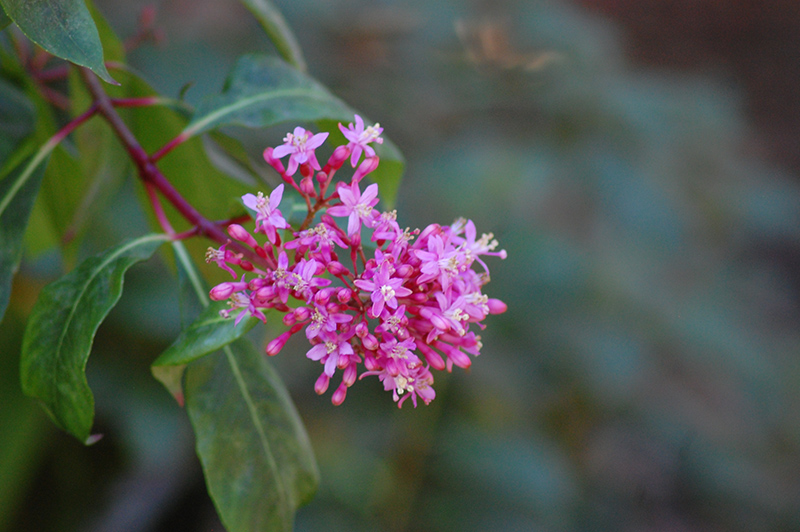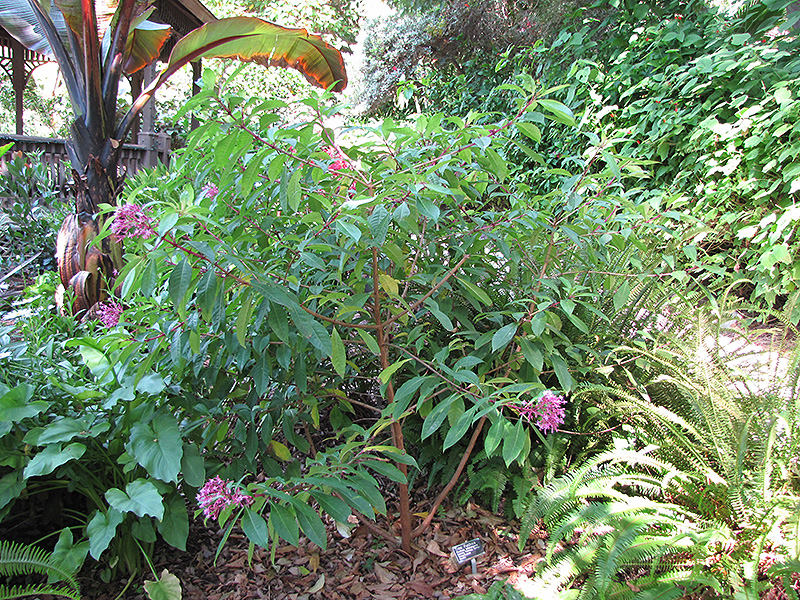Height: 6 feet
Spread: 5 feet
Sunlight:
![]()
![]()
Hardiness Zone: 9
Other Names: Lilac Fuchsia
Description:
A spectacular, upright shrub or small tree that eventually forms a large, woody bush; may be pruned to maintain size; stunning clusters of pinkish-purple flowers appear almost year-round, followed by dark blue berries; very attractive to hummingbirds;
Ornamental Features
Tree Fuchsia features dainty clusters of lightly-scented fuchsia trumpet-shaped flowers with shell pink overtones at the ends of the branches from mid winter to late fall. It has forest green foliage with light green veins. The textured oval leaves remain forest green throughout the winter. It produces deep purple berries from mid winter to late fall, which fade to navy blue over time. The smooth tan bark and crimson branches add an interesting dimension to the landscape.
Landscape Attributes
Tree Fuchsia is an open multi-stemmed evergreen shrub with an upright spreading habit of growth. Its average texture blends into the landscape, but can be balanced by one or two finer or coarser trees or shrubs for an effective composition.
This is a relatively low maintenance shrub, and is best pruned in late winter once the threat of extreme cold has passed. It is a good choice for attracting birds and hummingbirds to your yard. Gardeners should be aware of the following characteristic(s) that may warrant special consideration;
- Insects
Tree Fuchsia is recommended for the following landscape applications;
- Accent
- Mass Planting
- Hedges/Screening
- General Garden Use
- Container Planting
Planting & Growing
Tree Fuchsia will grow to be about 6 feet tall at maturity, with a spread of 5 feet. It has a low canopy with a typical clearance of 1 foot from the ground, and is suitable for planting under power lines. It grows at a fast rate, and under ideal conditions can be expected to live for 40 years or more.
This shrub does best in full sun to partial shade. It does best in average to evenly moist conditions, but will not tolerate standing water. It may require supplemental watering during periods of drought or extended heat. This plant will benefit from an application of bonemeal and/or mycorrhizal fertilizer at the time of planting. It is not particular as to soil type or pH. It is somewhat tolerant of urban pollution. Consider applying a thick mulch around the root zone in winter to protect it in exposed locations or colder microclimates. This species is not originally from North America..
Tree Fuchsia makes a fine choice for the outdoor landscape, but it is also well-suited for use in outdoor pots and containers. With its upright habit of growth, it is best suited for use as a 'thriller' in the 'spiller-thriller-filler' container combination; plant it near the center of the pot, surrounded by smaller plants and those that spill over the edges. It is even sizeable enough that it can be grown alone in a suitable container. Note that when grown in a container, it may not perform exactly as indicated on the tag - this is to be expected. Also note that when growing plants in outdoor containers and baskets, they may require more frequent waterings than they would in the yard or garden. Be aware that in our climate, this plant may be too tender to survive the winter if left outdoors in a container. Contact our experts for more information on how to protect it over the winter months.


